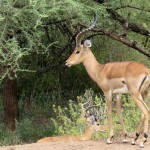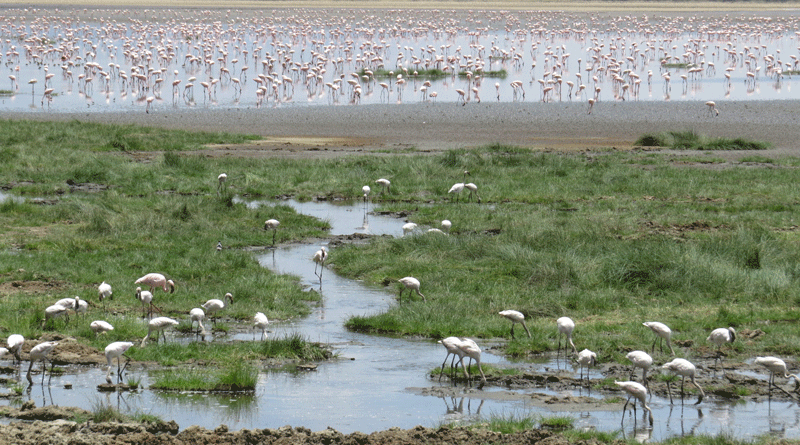LAKE MANYARA NATIONAL PARK, TANZANIA
By CHANTAL COOKE
Tree climbing lions may be what makes Manyara National Park in Tanzania famous – but it’s not the only reason to visit.
The park offers a very different safari experience; woodlands, streams, marshlands, plains and, of course, the lake itself. All in one 625km square park.
Baboons and blue monkeys welcome you at the gate and follow as you drive through the woodland catching the odd glimpse of a shy bushbuck peering out between the foliage.

This park is watered all year round by ground springs, so it’s greener than many. During the rainy season a large area of the land is covered by Lake Manyara. As the lake dries the ground becomes swamp attracting a range of wildlife; wildebeest, zebras, buffalo and impala graze on the long grasses, and hippos wallow in the muddy ponds. Cattle egrets and red billed ox peckers hang around looking for insects on the hides of the larger mammals. Squacco herons and long toed lapwings hunt for small frogs and snails in the marshy water.
Unlike many safari experiences you can get out of your vehicle to watch the animals – as long as you keep a safe distance. Near the edge of the marsh there is a viewing platform that gives you a great, raised view over the land allowing you to see the animals and birds hiding in the grasses.
Further along the trail there is a raised walkway out into the lake that offers an opportunity to get closer to the thousands of bright pink flamingos that sift the water for food.

The park is more than a just a great place to spend a day on safari – it’s an important wildlife haven. The huge increase in the human population of Tanzania from just 8million in 1961 to 45million in 2014 has had a devastating impact on wildlife. Areas that used to be rich in biodiversity are now virtually empty. Over grazing of cattle has led to a loss of trees which in turn has led to erosion; much of the land is now red dust unable to support much at all.
When the park was originally created it was much smaller, but it was recently expanded on order to protect the wildlife and create a migration corridor for the animals. Without these corridors the animals try to migrate to better feeding grounds but find themselves coming into conflict with humans as they attempt to cross farm land or pass through villages.

Without the national parks system, and the many local and international NGOs working to preserve the animals habits – often by simply educating local farmers on better farming methods or humane ways to keep wildlife away from livestock – Tanzania will lose its rich natural heritage.
Tanzania is a beautiful country with amazing, friendly people – and Tanzania’s 16 national parks, covering an area of more than 42,000 km2, are helping to keep it that way.
FACT BOX:

About the Author:
Chantal Cooke is an award winning journalist and broadcaster with a passion for the planet. In 2002 she co-founded the award winning radio station PASSION for the PLANET and in 2009 Chantal was awarded London Leader in Sustainability status. Chantal also runs a successful communications agency – Panpathic Communications.

